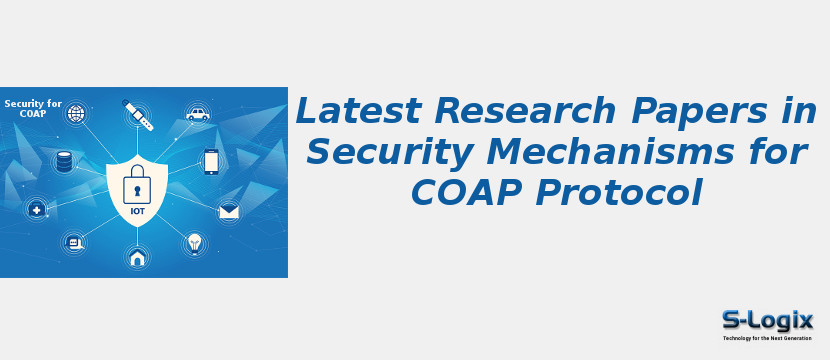Research papers in security mechanisms for the Constrained Application Protocol (CoAP) focus on addressing the unique challenges of providing secure communication in resource-constrained IoT environments, where devices often have limited energy, processing power, and memory. Since CoAP is designed as a lightweight RESTful protocol over UDP, it is highly vulnerable to threats such as eavesdropping, spoofing, replay, man-in-the-middle attacks, denial-of-service (DoS), and unauthorized access. To mitigate these threats, researchers have proposed a wide range of security mechanisms at different layers. At the transport layer, Datagram Transport Layer Security (DTLS) is the most widely adopted standard, providing confidentiality, integrity, and authentication, though its high handshake and memory overheads limit efficiency in constrained nodes. At the application layer, OSCORE (Object Security for Constrained RESTful Environments) has gained attention by securing CoAP messages end-to-end with lightweight encryption and integrity protection, reducing the dependency on DTLS session management. Other works explore lightweight cryptographic schemes, including Elliptic Curve Cryptography (ECC), pre-shared key (PSK) modes, raw public key (RPK) mechanisms, and certificate-less authentication to handle key management efficiently. Beyond cryptographic solutions, intrusion detection systems (IDS), trust-based frameworks, and machine learning techniques have been studied to detect anomalous behaviors in CoAP traffic. Researchers have also proposed proxy-based security architectures, blockchain-assisted trust management, and group security extensions for multicast CoAP scenarios. Cross-layer designs combining congestion control with security, as well as SDN-enabled CoAP architectures, have been suggested to balance performance with protection. Despite significant advancements, open challenges remain in ensuring scalability, group communication security, resistance to DoS and insider attacks, and ultra-lightweight mechanisms suitable for energy-constrained IoT devices. Overall, the body of literature highlights that securing CoAP requires a blend of optimized cryptographic protocols, intelligent intrusion detection, and adaptive, resource-aware designs to ensure robust and trustworthy IoT communication. Do you want me to expand this into a survey-style format with categories like cryptographic security (DTLS, OSCORE), trust-based models, intrusion detection, and hybrid mechanisms for CoAP, Abi bro?
